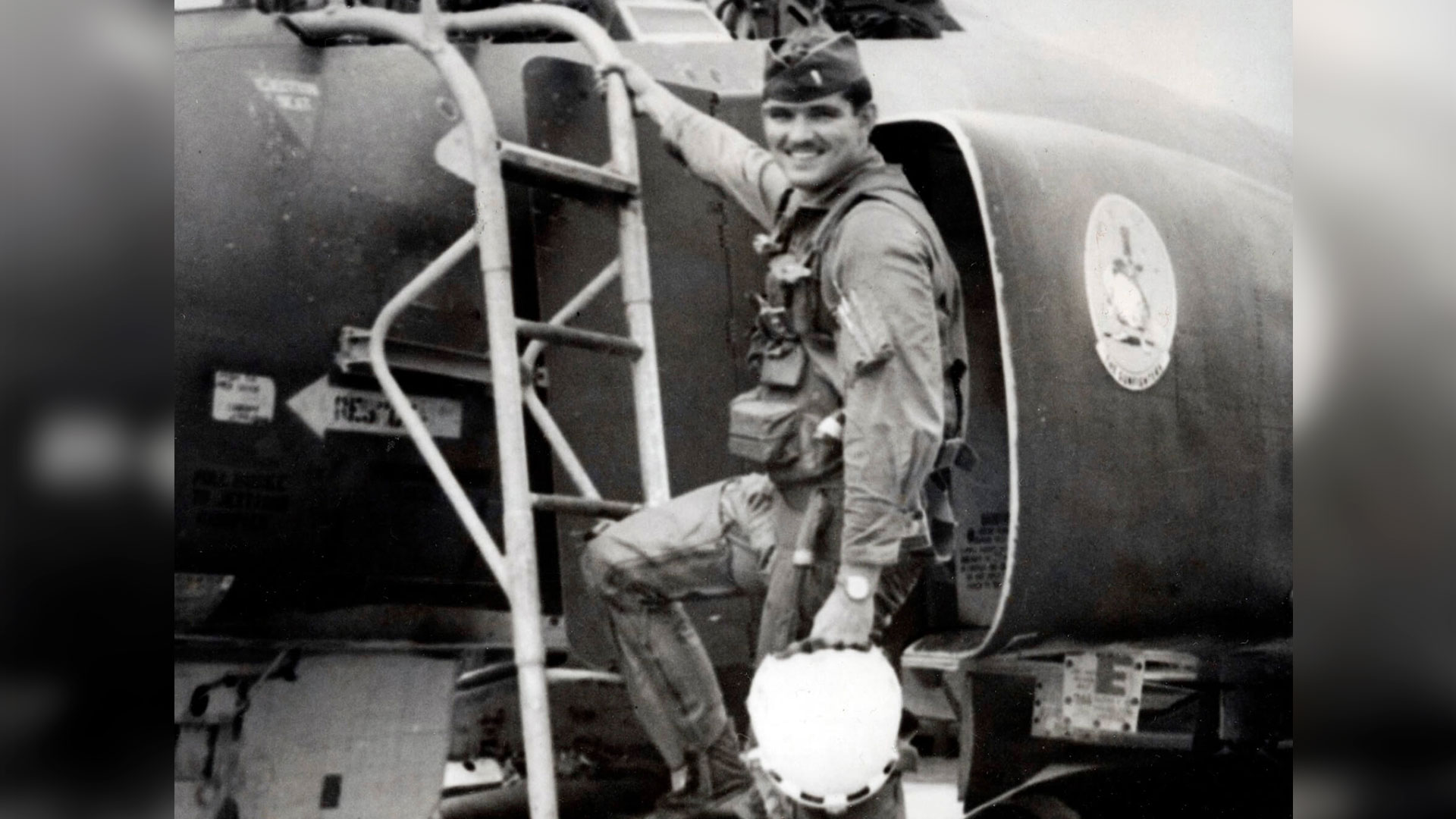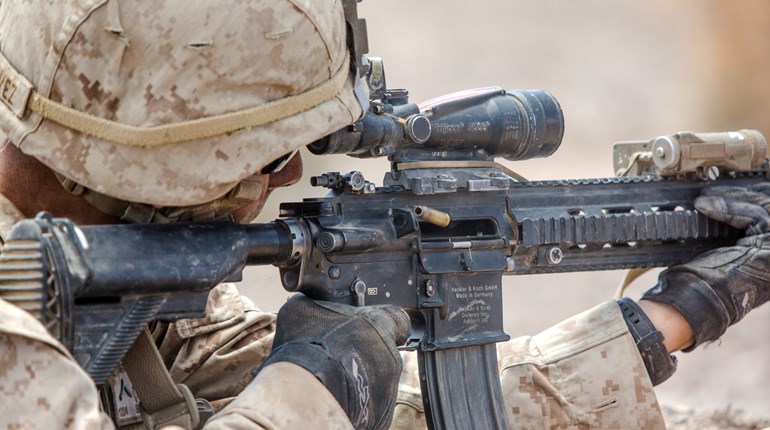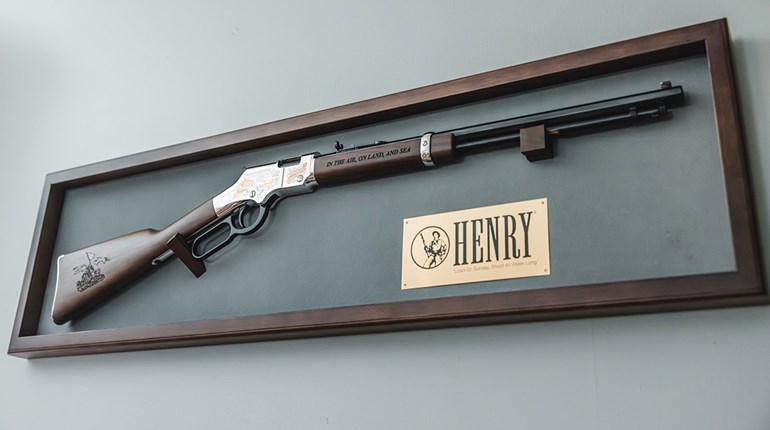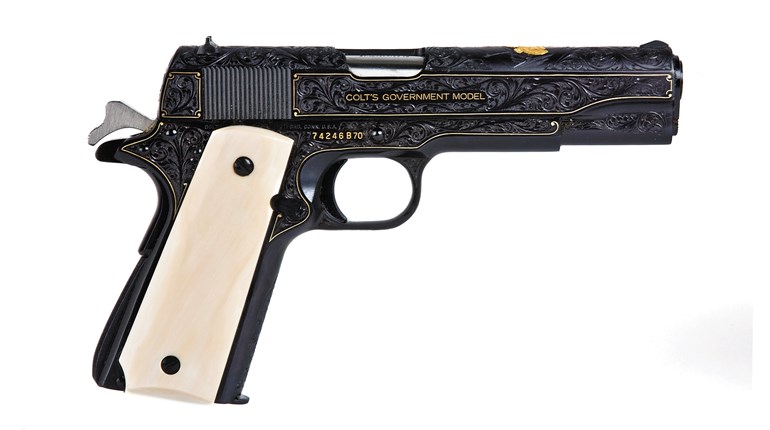
Military aviators, such as Lance Sijan (shown boarding his F-4 Phantom II), have always been at a greater risk for capture when their aircraft come under fire and crew are forced to bail out over hostile territory.
In the summer of 1959, the Marine Corps saw fit to send me to a unique base in the eastern Sierra mountains of California. Officially known as the Mountain Warfare Training Center and unofficially as “Pickel Meadows,” this was a different duty station. Originally intended to train Marines in cold-weather warfare—as in North Korea—the base had expanded to include courses in mountaineering and escape and evasion. After completing a short course in the latter subject, I spent the next couple of years teaching the complex skills of escape, evasion and survival.
In general, the U.S. military—not just the Marine Corps—placed very positive emphasis on conduct and survival as a prisoner of war. This was after the Korean War, during which many Americans were captured. Those held by the North Koreans were treated with intense brutality, but those held in Chinese camps were treated with a mixture of calculated brutality and psychological manipulation. Along the way, the process picked up the ominous nickname of brainwashing. Communist Chinese intelligence personnel were fully prepared to get the most out of the American prisoners. They were able to get enormous propaganda value from them, mostly because they were prepared and we were not. When the Korean War ended in a stalemate, the U.S. Department of Defense initiated a program of training for conduct and survival as a POW.
Much of this effort was directed at aviation personnel, because they were most likely to end up shot down and captured. Survival training schools were initiated all over the military. As we moved closer to another Asian war in Vietnam, we assumed any POWs we might suffer would be treated in the Chinese model. The basic defensive tactic when the brainwashing started was to say nothing but name, rank, serial number and date of birth. The North Vietnamese treated our POWs with a mixture of physical brutality and psychological pressure. In truth, it was more heavily weighted toward brutality and, as the war went on, frequent torture. But, the survival training effort put our guys in a much better position to resist.
An aviator is in a peculiar position if he or she loses their plane. One minute they are whipping through the skies as the master of some of the most advanced technology in the world. A few seconds later, they are a lightly armed infantryman, alone on unfriendly ground. Their survival equipment includes a radio with which they may be able to summon help, but the major tool in a survival situation is not a tool or a body of training. It is the will to survive.
Since the late 1940s when it was founded, the United States Air Force trained and continues to train thousands of pilots. Without exception, every one of them is a way-above-average physical specimen. They’re also inclined to test high for coordination, manual dexterity, basic intelligence and a host of other skills. Above all, they need to be able to manage adversity—in whatever form it may take. In a sense, the American warrior who has the greatest possibility of facing a survival situation is the one best equipped to deal with it—the downed pilot.
In the case of the Vietnam War, our aviators as a whole performed well. Eighty percent of the prisoners who spent time in enemy POW camps were either pilots or air crew members. One pilot stands out as a perfect example of the will to survive. The Air Force recognizes the example he set by naming part of his alma mater—the Air Force Academy—after him. He was Lance P. Sijan, an overachieving young American from Milwaukee. In school, he was involved in just about everything productive a teenager can do. It was the same when he made it to the Air Force Academy. By late 1967, Sijan was a fully qualified fighter pilot flying the big F-4 jet in missions over Laos and North Vietnam. Sijan had already built an impressive reputation as a determined warrior. Like all pilots, he too received jungle-survival training.
On the night of Nov. 9, 1967, Sijan was flying a mission over a portion of the Ho Chi Minh trail in Laos when his F-4 sustained damage. Sijan was forced to eject from his aircraft, a process that commonly causes at least some kind of injury—often multiple serious injuries. Sijan made it to the ground, but was unconscious. When he came to several hours later in a tangle of jungle growth, he had serious injuries. His right hand and forearm were mangled and deeply cut. He had a concussion and several scalp lacerations. But his mobility became seriously limited when he found compound fractures of both bones in the left leg. Moving was at a crawl, and the pain was intense.
Sijan crawled without food or proper medical care for six long weeks. At one point, he was captured, only to overpower a lone guard and escape with the soldier’s weapon. He was re-captured within hours, and the NVA put him into the infamous “Hanoi Hilton.” Apparently, this stubborn American’s resistance greatly angered his captors, because they withheld the medical care he needed and beat him unmercifully and frequently. Sijan died in captivity in January of 1968. His example for others was so profound that recognition came with the posthumous presentation of the Medal of Honor.
Capt. Lance P. Sijan stands out among those who go to work with fightin’ iron.




































